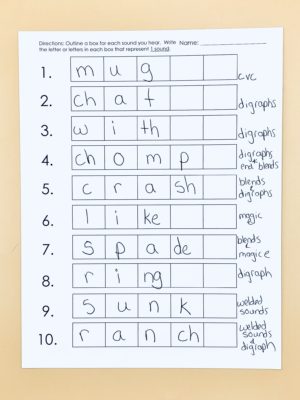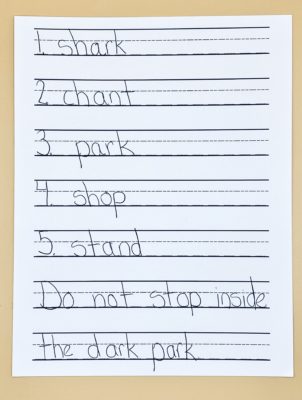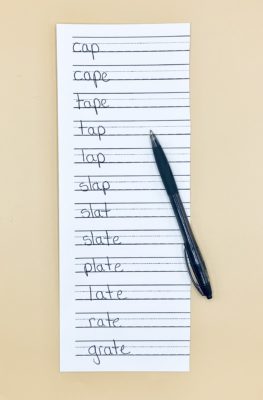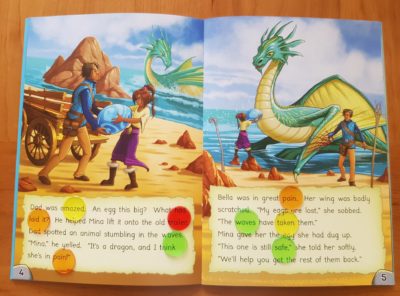Raise your hand if you’ve ever heard the phrase “some kids are just poor spellers.” I’ve got both hands and feet raised over here. Children are not destined to be poor or great spellers. All children can grow in their spelling, but we have to make sure we are giving them the proper instruction and opportunities to make that happen. Today, I want to discuss 5 different ways that we can improve spelling for our children.
1. Sound-symbol mapping
Sound-symbol mapping is one of the most useful tools a teacher has to improve spelling. The best part? All you need is paper with empty boxes. First, you say a word and children repeat it. Then, you ask students to tap the sounds. Next, children box in the number of sounds represented in that word. Finally, they write the word, one sound at a time, using the boxes. By using boxes to represent sounds, children are able to better understand and physically see the phoneme-grapheme correspondences.

2. Dictation
With dictation, you dictate for children the words you want them to spell. This is typically done as you introduce a new rule or as you review rules you’ve already taught. Dictation is a practice that I would’ve laughed at a few years ago. “You mean you just tell them what to write?!?! Where’s the free expression? Where’s the joy?” I’m here to tell you that sometimes it is okay to tell children what to write.
If we want our students to become better spellers, we must give them ample opportunities to practice spelling the skills we have taught and are currently teaching. Just like a football player may practice targeted skills, children must also be guided in their instruction.
Dictation can be easy, and using plain lined paper is a great way to do this. I ask students to label their paper 1-5. I give them 5 words and a dictated sentence. Those five words are a mixture of all the skills I’ve taught them up to that point.

3. Sound Decks
Sound decks are a practice often associated with Orton-Gillingham, but you don’t need any intense training to use them! A sound deck is a deck of cards with graphemes (think like ABC flashcards). Instead of only having all the vowels and consonants, though, a sound deck will include any grapheme that you have taught your students. Present the deck to your students, one card at a time. As you flash the card, ask students to tell you the sound represented by that grapheme. For example, if you hold up ai, children say “a,” ee would be “e,” and so on.
4. Word Chains
Word chains are one of those practices that are so simple and so fun, it can’t possibly be that effective. But kids love them and they are incredibly valuable. In a word chain, you start with a word, like chip. Then, you change one sound at a time to create a new word. A word chain could go like this: chip, chap, chat, hat, hit, bit, bat, bath, math.

5. Reading Text
If we want children to become better spellers, we need to expose them to the patterns we want them to learn. It might seem strange, but one way we can help our children become better spellers is by encouraging them to read more.

When children read texts that have patterns they have learned and are learning, we are helping to promote orthographic mapping. Students are learning to store those orthographic patterns in their heads for automatic, immediate retrieval later. If a child can automatically read a word, they have a good chance of being able to later spell that word. While it is not a guarantee, it is another tool we have to help our children. We must stop seeing our reading and spelling as separate subjects, when the reality is that both activities help to bolster each other.
Remember, no child is destined to be a poor speller. Through some simple activities and direct instruction, all children can improve their spelling.
***
This is a guest blog by Savannah Campbell, who is a K-5 reading specialist. She has taught her entire career at the school she went to as a child. She holds two master’s degrees in education from the College of William and Mary. Savannah is both Orton-Gillingham and LETRS trained. Her greatest hope in life is to allow all children to live the life they want by helping them to become literate individuals.
Workbooks containing off the shelf activities such as those described above can be purchased through our shop. The activities within these workbooks are linked to stories within our range of books.


Great practical article.